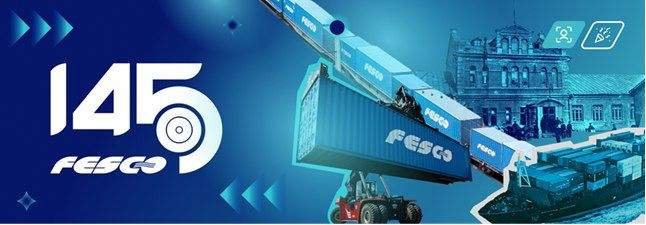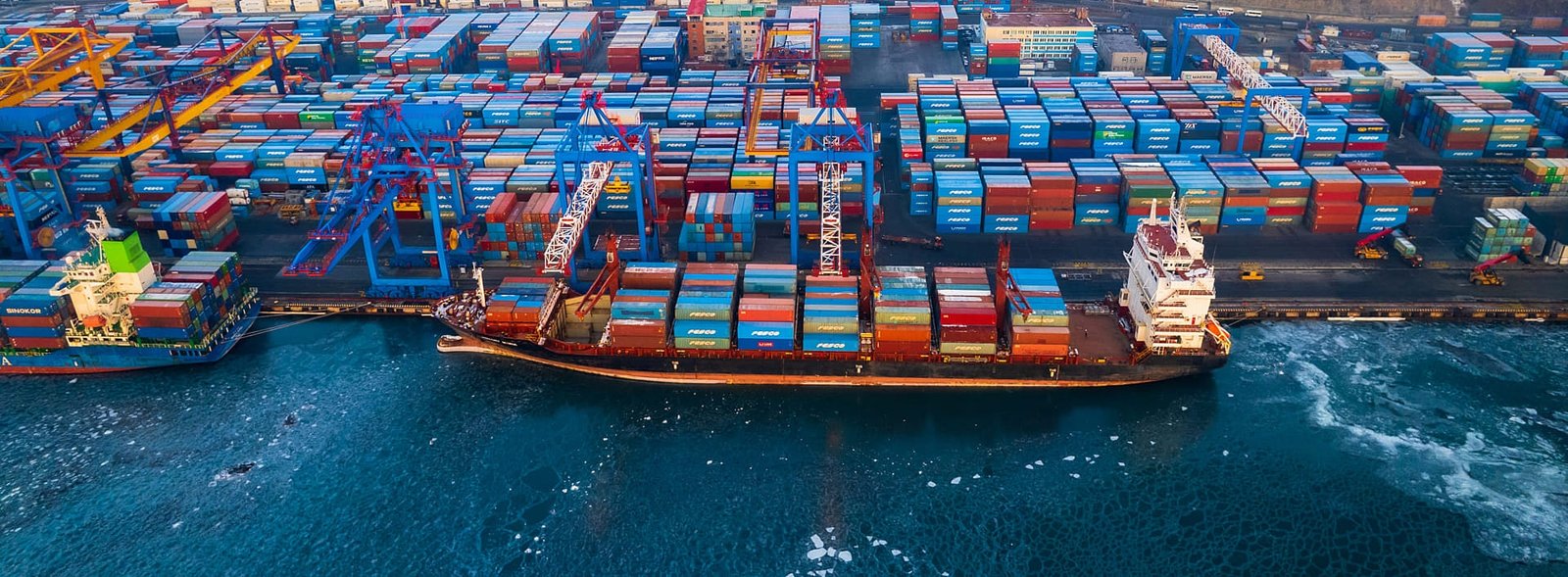Enter your container number, Bill of Lading (BL) or booking number into FESCO’s official tracking page MY.FESCO or into a third-party tracker (Project44, GoComet, ShipsGo, SeaRates). That will return the latest status, port calls, and estimated arrival windows. For enterprise needs, use Project44 or Portcast for predictive ETAs and API access. FESCOproject44Go Comet
Introduction: why container tracking matters (and why FESCO matters)
Imagine you’re waiting for a container of critical machine parts to arrive from Shanghai to Vladivostok, or a consignment of electronics moving from Busan into Russia’s heartland. Every day a container sits idle is money down the drain — demurrage, disrupted production, missed sales. That’s why accurate, timely container tracking has moved from “nice to have” to “must-have” in modern logistics.
FESCO — the Far Eastern Shipping Company — is a major player in container and intermodal transport across the Russian Far East and connecting corridors to Asia and Europe. They operate sea routes, rail links and terminal services that make this part of global trade possible. Understanding how FESCO tracking works, and which tools give you the best visibility, saves time and money for importers, freight forwarders and logistics teams. FESCOar2024.fesco.com
What is FESCO? (short, authoritative overview)
FESCO (Far Eastern Shipping Company) is an integrated transport and logistics group founded in the Russian Far East with roots stretching back to the late 19th century. Today it runs container lines, port terminals, rail and trucking services — making it a go-to carrier for cargoes moving between Southeast Asia, the Russian Far East and onward by rail to the rest of Russia and Europe. The company operates dozens of vessels and a broad intermodal network that includes container terminals and rail connections. fesco.ruar2024.fesco.com
What “tracking” actually tells you (the useful bits)
A good tracking record should answer a few practical questions at a glance:
- Where is my container right now? (port, terminal yard, on vessel, inland rail)
- What is the last event and timestamp? (loaded, departed, arrived, gate-in)
- Which vessel and voyage is it on?
- Estimated time of arrival or discharge (ETA/ETD) and any delays.
- Customs/terminal status that could affect pickup (holds, inspections).
Modern trackers also provide live-map views, notifications for milestones (sailing, arrived, customs release), and analytics like dwell time or demurrage risk.
Where to start: official FESCO tracking (MY.FESCO)

If you want the official readout, start at MY.FESCO — FESCO’s customer portal and tracking page. Type in a container number or Bill of Lading and you’ll get the carrier’s recorded events. It’s the quickest route for a direct carrier status without extra signup friction for basic lookups. For many shippers this is the first stop for a container’s canonical status. FESCO
How to use MY.FESCO (simple steps for a featured snippet):
- Go to my.fesco.com/tracking.
- Enter the container number (e.g.,
OOLU1234567) or the BL/MBL number. - Hit Search and read the timeline of events (loaded, vessel departure, arrival, gate-in/out).
- If you need documents or invoices, log into your MY.FESCO account or contact your FESCO representative.
Third-party tools: when to use them and why
Third-party platforms add value in three main ways:
- Aggregated visibility: track multiple carriers and consolidate data in one dashboard.
- Predictive ETAs: use machine learning and historical port performance to forecast arrival windows.
- APIs & automation: integrate live status into your TMS/WMS for automatic alerts.
Notable third-party trackers for FESCO shipments include Project44 (enterprise predictive visibility), GoComet (easy BL/container tracking and empty return tools), ShipsGo and SeaRates (container tracking interfaces). These options suit freight forwarders, logistics teams and shippers who manage many carriers or need alerts and APIs. project44Go CometSeaRates
Real-life example: reducing demurrage for an electronics importer
A mid-sized electronics importer based in Moscow used MY.FESCO plus Project44 feeds to reduce demurrage charges. They linked FESCO container events into their internal TMS and set automatic alerts when a container spent more than 48 hours in the discharge yard. The alerts triggered immediate communication with the terminal and customs broker, reducing average dwell time by two days — saving thousands in penalties over a quarter.
This example shows the difference between checking a single tracking page and embedding tracking into operational workflows: the latter converts data into action.
What identifiers can you use to track a FESCO shipment?
- Container number (most precise) — a 11-character ID like
MSCU1234567. - Bill of Lading (MBL or HBL) — useful when you don’t have the container number yet.
- Booking number — can work on some trackers.
- Vessel + voyage — helpful for schedule-based checks.
If you only have a BL or booking, use platforms that accept those fields (MY.FESCO, Project44, GoComet). FESCOGo Comet
Understanding tracking events — a short glossary
- Gate In / Gate Out: Container entered or exited the terminal yard.
- Loaded / On Board (vessel): Container was stowed on the vessel.
- Discharged: Container was unloaded at a port.
- Customs Hold: Container is held for inspection/document checks.
- Delivered / Released: Gate release after payment/customs; ready for pickup.
Knowing event semantics prevents panic: “discharged” doesn’t always mean “available for pickup” — sometimes customs or terminal processes still block release.
Choosing the right tool by use case
- Single shipment, DIY checking: MY.FESCO or SeaRates. FESCOSeaRates
- Multiple carriers & consolidated view: ShipsGo or SeaRates dashboards. SeaRates
- Enterprise visibility & predictive ETA: Project44 or Portcast (APIs and SLA). project44Portcast
- Empty container returns & detention risk: GoComet offers empty-return tracking tools. Go Comet
How predictive tracking improves planning
Predictive tracking uses historical vessel movement, port congestion data, and weather to estimate arrival windows more accurately than scheduled sailings. For companies with tight supply chains, this helps in:
- Adjusting production schedules.
- Booking inland transportation at optimal times.
- Negotiating storage or demurrage early.
Project44 and Portcast are market leaders in predictive ocean visibility for FESCO and similar carriers. project44Portcast
Troubleshooting: when tracking shows “no data”
Common causes and fixes:
- New shipment: event data can lag — wait a few hours and retry.
- Third-party sync gaps: try the carrier’s MY.FESCO portal as the authoritative source. FESCO
- Incorrect identifier: double-check container/BL format.
- Cookies/JS blockers: some carrier pages rely on JavaScript and third-party cookies — try another browser or disable blockers. Vinculum
If the data remains missing, contact your freight forwarder or FESCO customer support with the BL and booking number.
Security and data privacy: what to expect
Carrier portals and enterprise platforms require identity validation before exposing document-level details (invoices, release forms). For routine status checks, however, the container number and BL often return events without signup. If you need PODs (proof of delivery) or invoices, you’ll typically need a registered account or to request documents through your agent. FESCO
Practical tips to get better visibility and avoid delays
- Collect the container number early — this is the most precise tracker key.
- Use both carrier portal and a third-party dashboard — compare and reconcile events.
- Automate alerts for gate-in, discharge and customs release.
- Monitor port performance — congestion at discharge ports often causes the majority of delays. FESCO’s annual reporting and terminal partners provide hints on regular bottlenecks. ar2024.fesco.comglobalports.com
- Schedule inland transport after custom clearance to avoid detention fees.
FESCO tracking
FESCO tracking, Far Eastern Shipping Company tracking, FESCO container tracking, track FESCO container, MY.FESCO tracking, FESCO Bill of Lading lookup, FESCO vessel schedule, FESCO ETA prediction, container tracking Russia, intermodal tracking FESCO.
Frequently asked questions (optimized for featured snippets)
Q: Can I track a FESCO container with just a Bill of Lading?
A: Yes. Both MY.FESCO and several third-party trackers accept MBL/HBL numbers. If the container number is available later, use that for more precise events. FESCOGo Comet
Q: How accurate are predicted ETAs from Project44 or Portcast?
A: Predictive ETAs are typically more accurate than schedule-based ETAs because they use live vessel positions, port congestion and historical patterns. Accuracy varies by trade lane and port data availability. project44Portcast
Q: My tracker shows “discharged” but the container is not released — why?
A: Discharged means the container was offloaded from the vessel. Release for pickup can still be delayed by customs inspections, terminal backlog, or documentation issues. Always check for customs holds or gate-out events. ar2024.fesco.com
How to integrate FESCO tracking into your operations (practical checklist)
- Create a central tracking dashboard (TMS or spreadsheet) that ingests container numbers and BLs.
- Use a third-party API (Project44/Portcast) for automated, normalized events. project44Portcast
- Set conditional alerts: notify operations when a container is discharged, when dwell time exceeds threshold, or when vessel ETA slips by more than X hours.
- Assign an owner (operations or customer service) for each shipment to act on exceptions.
- Maintain a contact matrix: terminals, customs broker, FESCO operations rep and local agents.
The future of container visibility — what to expect from FESCO and the market
FESCO has been expanding intermodal services and digital customer tools (MY.FESCO, integrated terminal networks, rail corridors). The trend across carriers is toward:
- Deeper API access and standardized events.
- More accurate predictive ETAs that combine AIS, terminal and rail feeds.
- Increased automation for customs and terminal releases to cut dwell times.
FESCO’s 2024 reporting highlights network expansion and investments in terminals and fleet — all of which enhance visibility and speed for shippers. ar2024.fesco.com+1
Closing: where to go from here
If you’re tracking a single shipment, try MY.FESCO first and save the container or BL number. For frequent shipments or commercial operations, evaluate Project44 or Portcast for predictive visibility and APIs, or use GoComet/ShipsGo for cost-effective dashboarding and empty-return tracking. The right combination — carrier portal plus automated third-party visibility — turns tracking data into operational advantage.
Sources and further reading
- FESCO official website and services overview. FESCO
- MY.FESCO tracking portal. FESCO
- FESCO 2024 Annual Report and strategic highlights. ar2024.fesco.com+1
- Project44 — carrier tracking and predictive ocean visibility. project44
- GoComet — FESCO tracking and empty-return solutions. Go Comet

